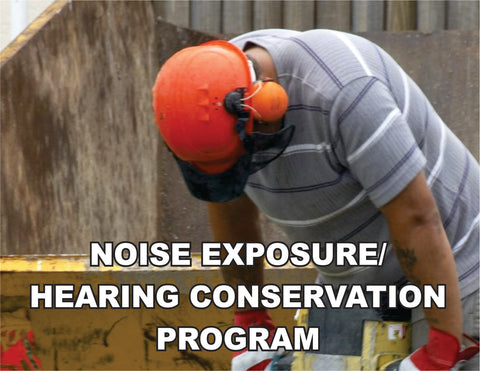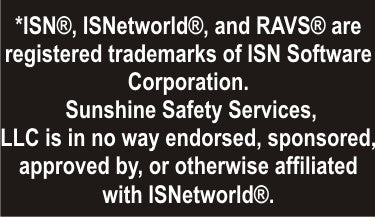Noise Exposure/ Hearing Conservation Program - ISNetworld RAVS Section - US
$ 24.95
Noise Exposure/ Hearing Conservation Program - ISNetworld RAVS Section - US
This Noise Exposure/ Hearing Conservation Program (ISNetworld® RAVS®* Section), in addition to being a complete and functioning written safety program (chapter), it also contains all the required text elements that are sought by the ISNetworld RAVS® (Review And Verification Service) reviewer. This plan has been previously submitted and has achieved a 100% approval rating for our clients.
- All programs are guaranteed now and in the future to achieve 100% approval.
- There are NO maintenance or subscription fees.
- Simply notify us if any program falls out of compliance and we will correct it at NO CHARGE.
You are downloading a Microsoft® Word document file to your computer that is completely editable:
- Noise Exposure/ Hearing Conservation Program:
- Approximate Word Count: 2,910
- Approximate Number of Pages: 9
- Page Reference Answers to RAVS Reviewer’s Questions: 5
You will also receive instructions for a simple two-step process to place your company name and safety person's name throughout this word document to conform it to your company. Please review, and feel free to alter or add to it as you wish with any specific company information or safety policies that you may already have.
The first two pages of the document are guidelines for conforming this safety manual section, an index for completing the RAVS® questionnaire (with all page references), and uploading the section.
If you experience any difficulty filling out the questionnaire, or have any questions in general about these documents, call 314-570-0072, or e-mail me at vsunshine1@gmail.com.
An excerpt from ISNetworld® RAVS®* Safety plan Noise Exposure/ Hearing Conservation Program
Introduction
This section contains information on the effects, evaluation, and control of noise. For assistance in evaluating a noise problem, contact the Responsible Safety Officer, Replace with Safety Person’s Name.
Danger of Noise
Exposing the ear to high levels of noise may cause hearing loss. This loss can be temporary or permanent. Temporary hearing loss or auditory fatigue occurs after a few minutes exposure to an intense noise but is recoverable following a period of time away from the noise. If the noise exposure is repeated, there may be only a partial hearing recovery and the loss becomes permanent. Typically, significant hearing losses occur first in the frequency range of 3,000 to 6,000 hertz (Hz). Losses in this frequency range are not critical to speech perception, and the individual usually is completely unaware of this initial symptom. With longer exposures, the hearing loss spreads to lower frequencies, which will affect speech perception. Workers' Compensation laws regard hearing losses in the speech frequency range of 500 to 3,000 Hz as being compensable.
The evaluation of hearing loss due to noise is complicated by the fact that hearing acuity normally decreases with increasing age. Further, the losses associated with age are quite similar to those caused by excessive noise since the hearing for high frequency sounds is most affected in both instances. Hearing impairment may also result from infections, tumors, and degenerative diseases.
ACGIH Standards
OSHA has prescribed the limits established by the American Conference of Governmental Industrial Hygienists as a standard for occupational noise exposure. Both the sound pressure level of the noise and the total duration of the noise exposure are considered to determine if these limits are exceeded. The sound pressure levels are expressed as dBA or decibels A-weighted. A-weighting filters are used when measuring sound levels to more accurately predict the response of the human ear to different frequencies.





